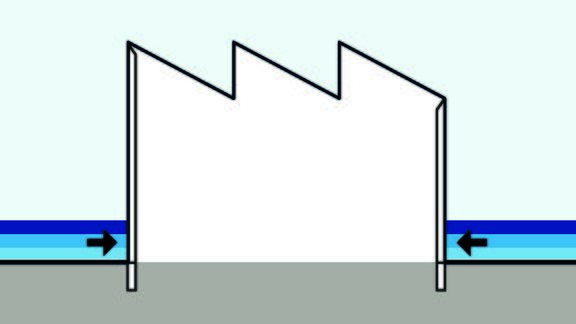Water-pressure-resistant supporting structure
When a building or asset is waterproofed or dryproofed, it is important for the supporting structure to be strong and stable enough to withstand the water pressure on the outer wall. And you should prevent water from flowing in through cracks, edges and walls.
Make sure you design the foundations, door and window frames, walls and glasswork so that they do not collapse under water pressure during flooding.
- Applicable to buildings, factories and installations;
- Spatial adaptation;
- Permanent measure;
- Substantial investment;
- Prevents economic damage;
- Applicable at all flood depths.

The foundations, outer wall, door and window frames, walls and glasswork should be sized so that they do not collapse when the water reaches a given level. This stops water entering through gaps, edges and walls and ensures that the structure will not give way under the water pressure.
During a flood, the supporting structure of a ‘dryproof’ building is subjected to high hydrostatic pressure. The higher the water level on the outer wall, the higher the pressure. The structure must be able to withstand this pressure during a flood. This can be achieved by using beams, columns and slabs with the appropriate dimensions. In areas outside the flood defence system where water can drain away freely, the duration of the flood is usually limited to a few days.
Back to the overview.
You can take these measures to improve your flood protection. The focus here is on generic descriptions of the measures in question. If you have questions about applying the measures on your site, please contact the Flood Risk Management Team.
No rights can be derived from the measures. See also the disclaimer.